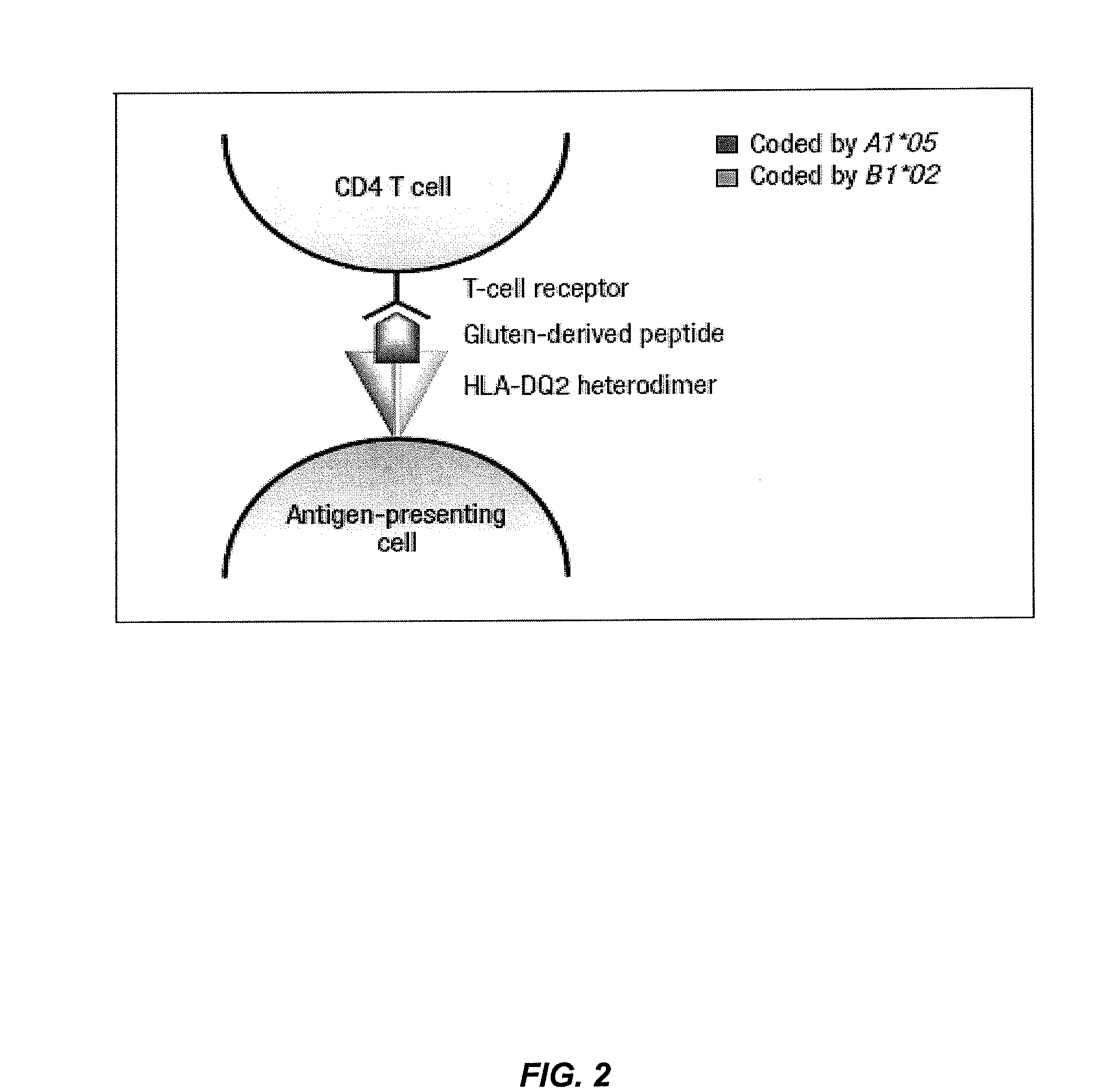Methods to predict risk for celiac disease by detecting anti-flagellin antibody levels
a technology of anti-flagellin and celiac disease, which is applied in the field of methods to predict celiac disease risk by detecting anti-flagellin antibody levels, can solve the problems of limited clinical utility of genetic screening to ascertain the susceptibility to cd, complicated diagnosis of cd, and little useful information for the person at risk who does carry one or both of these haplotypes
- Summary
- Abstract
- Description
- Claims
- Application Information
AI Technical Summary
Benefits of technology
Problems solved by technology
Method used
Image
Examples
example 1
HLA-DQ Genotype Stratifies Patients At Risk For Celiac Disease
[0242]A. Methods
[0243]Blood samples from 10,191 consecutive subjects who had gastrointestinal symptoms consistent with CD or who were related to patients with CD were analyzed. All uniquely identifying patient information was deleted; only age (without birth date), sex, and laboratory sample number were recorded. The database was thus restricted to preserve the anonymity and confidentiality of the patients' personal medical information. No clinical data were represented in the database, including the reason for the testing.
[0244]1. Serologic Testing
[0245]Anti-EMA IgA was detected by indirect immunofluorescence using monkey esophagus. Serum samples were incubated with the tissue sections, and bound antibodies were detected using a fluorescein-labeled conjugate. Each tissue section was reviewed by a trained clinical laboratory scientist for antibody detection. A positive result was determined at dilutions of ≧1:10.
[0246]Ant...
example 2
Specific HLA-DQ Genotypes Are Associated with Elevated Anti-CBir1 Antibody Levels
[0307]This example illustrates that serum immune responses to anti-CBir1 flagellin antibodies correlates with HLA-DQA1*05-DQB1*0201 (DQ2.5) and DQA1*03-DQB1*0302 (DQ8) genotypes in a large group of U.S. patients at risk for celiac disease (n=5406) who are EMA positive.
[0308]Celiac disease (CD) is caused by an inappropriate immune response to wheat gluten proteins, and similar proteins in rye and barley, in genetically susceptible individuals. The prevalence is estimated to be 1% of the U.S. population, similar to that of the European Union. Important genetic predisposing factors are HLA-DQ2 and HLA-DQ8, which are necessary but not sufficient for the development of CD, as they are present in up to 30% of healthy individuals. Thus, many patients possess both risk factors (genes and gluten ingestion) and never develop CD. As in inflammatory bowel disease, an overly aggressive immune response to resident lu...
PUM
| Property | Measurement | Unit |
|---|---|---|
| diameter | aaaaa | aaaaa |
| fluorescent | aaaaa | aaaaa |
| luminescent | aaaaa | aaaaa |
Abstract
Description
Claims
Application Information
 Login to View More
Login to View More - R&D
- Intellectual Property
- Life Sciences
- Materials
- Tech Scout
- Unparalleled Data Quality
- Higher Quality Content
- 60% Fewer Hallucinations
Browse by: Latest US Patents, China's latest patents, Technical Efficacy Thesaurus, Application Domain, Technology Topic, Popular Technical Reports.
© 2025 PatSnap. All rights reserved.Legal|Privacy policy|Modern Slavery Act Transparency Statement|Sitemap|About US| Contact US: help@patsnap.com


